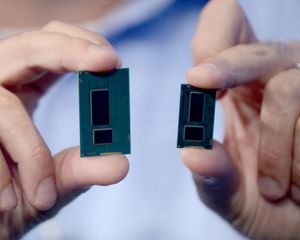The most modern processors produced by Intel now are based on 14-nanometer technology. Generation goes by the name “Broadwell” and then manufacturing technology was adopted, it was delayed by several months.
Also read: Intel will put an end to cable chaos “(CW. en)
A new embarrassing delay, Intel hopes to avoid when the next generation processor production technology is used.

10 nanometers in 2016
The new 10-nanometer technology is expected around 2016. Timing is therefore a bit vague, but ahead of a large conference taking place in San Francisco this week, maintained a leading Intel researcher that the timetable now seems to hold.
The conference goes by the name ISSCC 2015, which stands for International Solid State Circuits Conference, and it is the international engineering and scientific organization IEEE (Institute of Electrical and Electronics Engineers) behind. IEEE has more than 400,000 members worldwide.
The conference in San Francisco is considered one of the most important academic gatherings related to semiconductor technology, but what is being discussed there is far more than just academic interest, writes US PC World.
At the conference, Intel Monday night US time participate in a panel discussion about the challenges that processor manufacturers precedes when they should go a step further, from 14- to 10-nanometer manufacturing technology.
The practical implication of this process for us electronics users will be silicon chips that drive computers, mobile phones, tablet computers, servers and much other data electronics, will be even faster and use even less power in the next generation.
– schedule hold
On a conference call with IT trade press prior to the conference pointed Intel senior Mark Bohr that the timetable seems to hold for the transition from 14- to 10-nanometer production technology around 2016 and further to 7-nanometer production technology around 2018.
And the most important Bohr message is that this can be done without the need to adopt new and more costly production technology than today, as technology based on ultraviolet laser beams.
The technology used to manufacture silicon chips is complicated, in which light rays are used to “break” the pieces from the silicon mass. It is a great challenge of dealing with light wavelengths to provide increasingly better processor chips.
If the industry collectively fail to continue the improvement process or fail to proceed without adopting much more expensive production technology, the result may be that the continuous performance improvement we’ve had over the last 50 years, may slow up, and that the industry is unable to keep pace with Moore’s Law.
Intel now has a pilot installation consistently manufacturing chips based on 10-nanometer technology, and according to Bohr goes production here 50 percent faster than in the current 14-nanometer process.
That’s good news for the PC market, writes PC World.

Moore’s Law
It was one of the founders of Intel, Gordon Moore, who came with the statement that was later standing as Moore’s Law. 50 years ago he predicted that production technology transistors would improve steadily with a doubling of processor density roughly every 18 months.
Later this often been interpreted as meaning that the processors are twice as fast – and often half as costly – for each new processor generation that pops up with a half to two years. David House at Intel specified this as a doubling of performance every 18 months as a result of the combination of more and faster transistors.
So far, the “law” showed to be correct to a great extent, but as processor chips steadily shrinking, there is a greater and greater technological challenge to continue developing at the same pace as before.
Intel now provides thus Moore’s Law the chance to work in another few years.
Intel promises much with fifth-generation Core i processors:
Better performance, longer battery life “(CW.no)
No comments:
Post a Comment